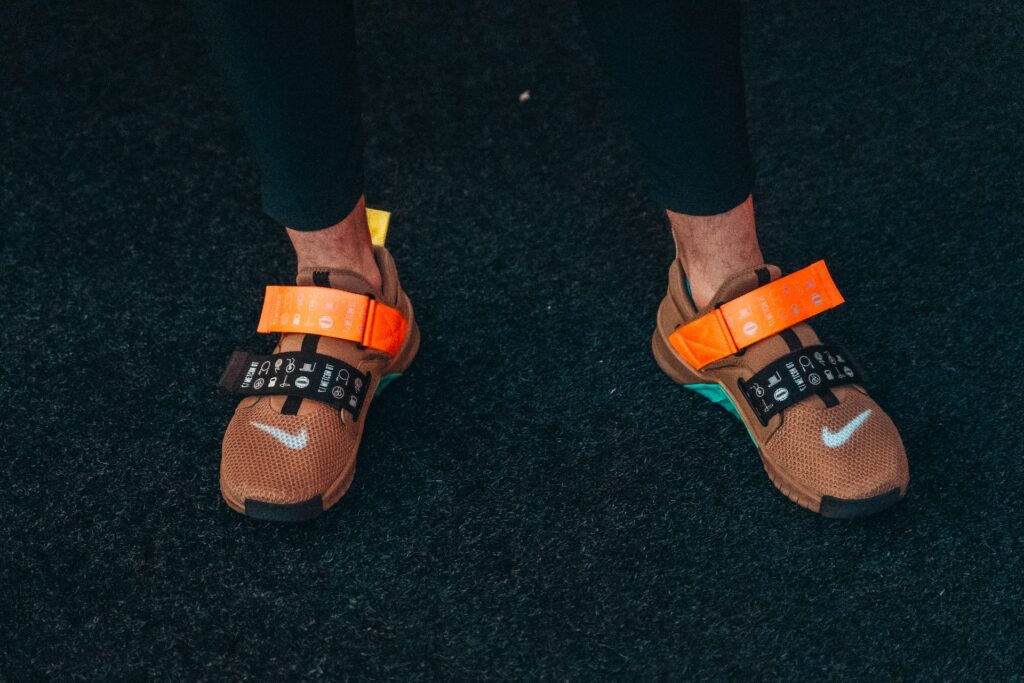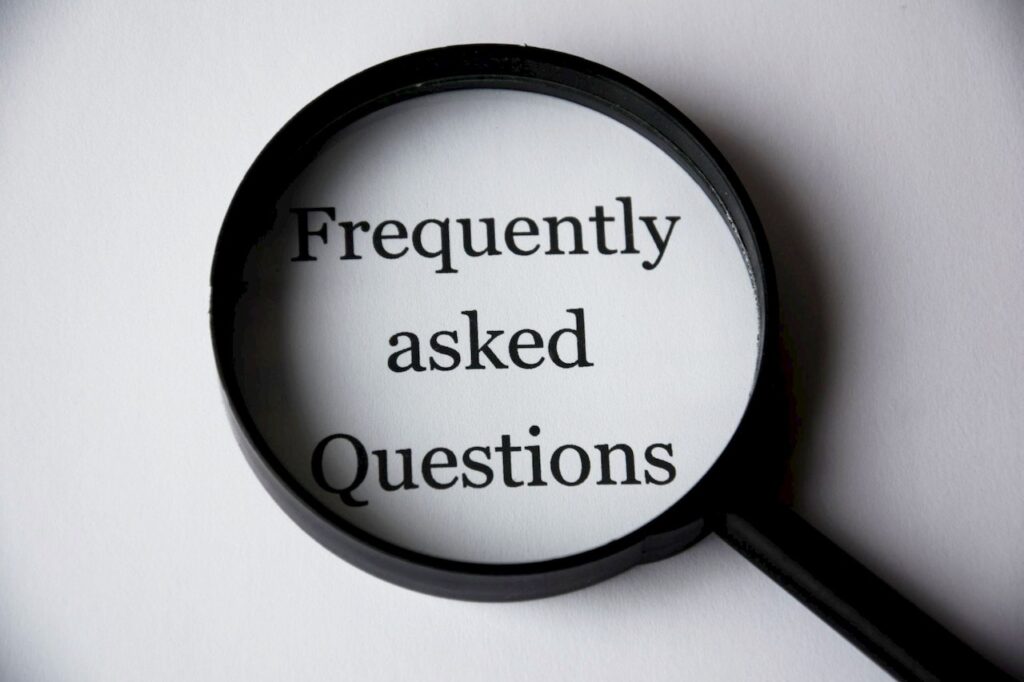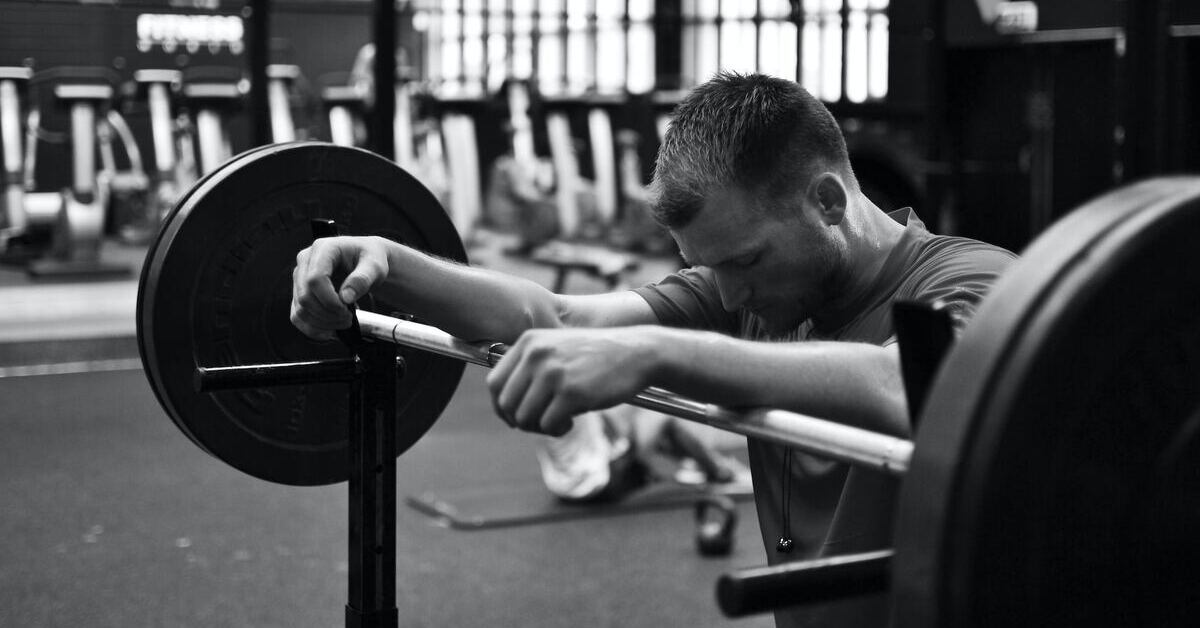Many lifters squat in strength training shoes because it can be beneficial. There are also many lifters who squat barefoot because, similar to squatting with strength training shoes, it can be beneficial.
You might be wondering, “Which is better, squatting barefoot or squatting with strength training shoes?”. The best option depends on your training goals and preferences. To better illustrate this point, we need to examine both, comparing their benefits and drawbacks.
In this article, we’ll compare squatting barefoot and squatting with strength training shoes, highlighting their similarities, differences, benefits, and drawbacks. We’ll also recommend shoes that can be used as alternatives to squatting barefoot.
The Squat

The squat is a compound exercise that primarily targets the quads, glutes, and hamstrings. For decades, it’s been a staple in many lifters’ training regimens because it’s an excellent exercise for improving muscle mass and strength.
The squat is one of the three lifts performed at powerlifting competitions, and it’s used by Olympic weightlifters as an assistance exercise for the clean and jerk and snatch. It’s also used by many bodybuilders for leg development.
There are many variations of the squat, such as the high bar squat, low bar squat, front squat, and Zercher squat. Although most squat variations require a barbell, some can be performed with other types of equipment, such as dumbbells, kettlebells, or Smith machines.
Why Is Barefoot Squatting Popular?

Although most lifters squat in shoes, many choose to squat barefoot. In recent years, society has shifted toward living a “natural” lifestyle. Examples of this are eating non-GMO foods and training using natural methods, such as barefoot running. This lifestyle shift, and the fact that training barefoot can be beneficial, is probably why squatting barefoot has become popular.
Although squatting barefoot has benefits, it also has drawbacks. Some of these drawbacks can affect your health, so it’s important to do your due diligence before deciding to squat barefoot.
What Are Strength Training Shoes?

Strength training shoes are specifically designed for strength training. They provide stability and support for strength training exercises. Here are some features that differentiate strength training shoes from other types of footwear:
- Some have raised heels. Some strength training shoes, specifically Olympic weightlifting shoes, have heels that range between 0.5 to 1 inch (usually 0.75 inches) tall. They’re designed to reduce the ankle mobility demands of the squat and provide stability.
- Their outsoles are made of non-slip material. Slipping while performing a weight training exercise is dangerous and can lead to injury. Strength training shoes’ outsoles are made of non-slip materials, usually hard rubber.
- They have non-compressible midsoles. Strength training shoes’ midsoles are designed to be rigid and non-compressible, providing stability and enhancing force production.
- Some have ankle and/or metatarsal straps. Many strength training shoes have velcro straps to secure your feet and provide additional stability.
Similarities and Differences Between Squatting Barefoot and Squatting With Strength Training Shoes

To get a better understanding of the similarities and differences between squatting barefoot and squatting with strength training shoes, we can examine how they affect several factors that are relevant to the squat.
Comfortability
Having wide feet is a common foot condition that affects many lifters. There are several factors that can cause this condition, such as genetics, age, and foot deformities. If you’re a lifter with wide feet, squatting barefoot will likely be most comfortable for you. This is because when you’re barefoot, your toes won’t be constricted by a shoe’s toe box.
Some lifting shoes, especially Olympic weightlifting shoes, tend to have smaller toe boxes, which can be uncomfortable for lifters with wide feet. It’s important to wear shoes that fit properly. Wearing shoes that are too narrow for your feet is not only uncomfortable but can lead to painful foot conditions, such as hammer toes and bunions.
Proprioception
Proprioception refers to a person’s ability to be aware of their body’s positioning and movement patterns. Proprioception is important because it allows us to use proper form and maintain our balance when lifting weights.
When you squat barefoot, your feet make direct contact with the ground. The less material between your feet and the ground, the more aware you’ll be of your body’s movements. When squatting with shoes, the shoe’s soles act as a barrier between your feet and the ground. This barrier impairs proprioception, making you less aware of how your body is positioned.
Toe Splaying
When performing physical activities, such as lifting weights or running, your toes naturally splay, or spread, to support your feet. Toe splaying improves balance and force production, which can improve performance.
Squatting with shoes, especially shoes with a narrow toe box, makes it harder to splay your toes. This is because a shoe’s toe box confines your toes, restricting their movement. When squatting barefoot, it’s easier to splay your toes because there’s nothing confining them.
Stability
The midsole is the layer of cushioning between a shoe’s insole, the part of the shoe that touches your foot, and outsole, the part of the shoe that touches the ground. Midsoles are important because they affect a shoe’s comfortability, durability, and stability. Stability is important for lifting weights because it affects your balance and ability to produce force.
When squatting, it’s best to wear shoes with non-compressible midsoles. If you squat in shoes with compressible midsoles, your stability will be negatively affected. Non-compressible midsoles prevent your feet from sinking into them, giving you a solid, stable surface to push off of.
When you squat barefoot, there’s nothing between your feet and the ground. If you want your feet to be as close to the ground as possible when squatting, nothing will make them closer than being barefoot.
Ankle Mobility
Ankle dorsiflexion, or flexing your ankles so that your toes point toward your shins, occurs at the bottom of the squat. If you have poor ankle mobility, your ability to perform ankle dorsiflexion will be limited, and you won’t be able to squat to full depth while keeping your heels on the floor. To avoid this problem, many lifters wear heeled shoes, most notably, Olympic weightlifting shoes.
Heeled shoes reduce the amount of ankle mobility necessary to perform a full-depth squat, making it possible for lifters with poor ankle mobility to squat properly. Heeled shoes are sometimes used by lifters to avoid improving their ankle mobility.
When trying to improve ankle mobility, squatting barefoot is a good way to identify ankle mobility limitations. A tell-tale sign of having poor ankle mobility is if your heels come off the ground at the bottom of the squat. Some lifters aren’t aware that this is happening, especially when wearing shoes. Squatting barefoot enhances proprioception, which can make it easier to notice your heels coming off the ground at the bottom of the squat.
Injury Risk
Squatting in shoes is much safer than squatting barefoot. In general, barefoot lifting increases your risk of injury because it leaves your feet exposed to potential hazards. For example, if a falling object, such as a weight plate or barbell, lands on your feet, it’s more likely that your feet will be injured.
Although lifting shoes won’t completely protect your feet from hazards, they provide more protection than being barefoot. The outer structure and soles of strength training shoes provide minimal to moderate protection against impacts, dropped weights, and other dangers. If a weight falls on your feet while you’re wearing strength training shoes, your feet will likely be less injured than if you were barefoot.
Hygiene
Gym floors are gathering grounds for various types of microorganisms that can cause foot conditions, such as fungal infections and plantar warts. When you lift barefoot, your feet are exposed to these microorganisms.
If you want to squat barefoot but also want to avoid getting germs on your feet, wearing barefoot shoes is an option. Barefoot shoes are designed to make their wearers feel like they’re barefoot, but they still provide protection against germs and injuries. A popular barefoot shoe is the Vivobarefoot Primus Lite III.
Recommended Shoes for Squatting
Both squatting with and without shoes have their advantages and disadvantages. If you’ve decided that barefoot squatting isn’t for you, here are some shoes we recommend for squatting.
Vivobarefoot Primus Lite III
The Vivobarefoot Primus Lite III is a good option if you’re looking for a barefoot shoe for squatting. The Primus Lite III’s thin 4mm soles leave little material between your feet and the ground, so wearing this shoe is similar to being barefoot. It has a wide toe box, which is great for lifters with wide feet. It’s also a versatile shoe that can be used for lifting weights, running, and functional training.
The Vivobarefoot Primus Lite III is somewhat expensive, so it might not be the best option for lifters on a budget. It should only be used for short runs because it lacks adequate cushioning for long runs.
Converse Chuck Taylor All Star
The Converse Chuck Taylor All Star is a classic basketball shoe that’s become the go-to shoe for many lifters. The Chuck Taylor All Star’s non-compressible midsoles make it ideal for squatting and other weight training exercises. It has flat heels, so if you prefer squatting in flat heels instead of raised heels, it’s a good option. The Chuck Taylor All Star is an inexpensive shoe, so it’s a good option if you’re on a budget. Also, it’s classic, fashionable design makes it appropriate for casual settings.
The Converse Chuck Taylor All Star isn’t optimal for functional training, so look elsewhere if you want a versatile shoe. Chuck Taylors aren’t designed to have adequate durability for lifting weights, so they won’t last as long as shoes designed for lifting weights.
Vans Sk8-Hi
Although the Vans Sk8-Hi is designed for skateboarding, its design makes it a good shoe for lifting weights. Similar to the Converse Chuck Taylor, the Vans Sk8-Hi has flat, non-compressible soles, making it ideal for many weight training exercises. The Sk8-Hi is affordable, which is good for beginners and lifters who don’t want to spend lots of money on strength training shoes. Also similar to the Chuck Taylor All Star, the Sk8-Hi can be worn in a casual setting.
The Vans Sk8-Hi has a higher stack height than most strength training shoes, so if you want your feet to be as close to the floor as possible, it’s not the best option. The Sk8-Hi isn’t versatile enough for sprinting or plyometrics, so we wouldn’t recommend it for CrossFit.
NOBULL Trainer
If you’re looking for a high-quality flat shoe for squatting, you’ll be hard-pressed to find a better option than the NOBULL Trainer. The Trainer is designed to be extremely durable, having uppers made of SuperFabric and sturdy midsoles, and its low stack height allows your feet to make a solid connection with the ground. The Trainer is a cross-training shoe, and it can be used for various activities, such as rope climbing and short sprints.
The NOBULL Trainer might take a while to break in because of its rigid construction. Also, it’s more expensive than many other strength training shoes, so look elsewhere if you’re looking for an inexpensive option.
Nike Romaleos 4
If you prefer to squat in shoes with raised heels, consider choosing the Nike Romaleos 4. The Romaleos 4’s heavy, sturdy design makes it very stable, so it’s a good option if stability is an issue for you. It includes two metatarsal straps to help secure your feet. The Rom 4’s durable design allows it to withstand the rigors of lifting weights, so this shoe can last you a long time.
The Nike Romaleos 4’s narrow toe box can be a problem if you have wide feet, so we recommend going a half size up. The Romaleos 4 is the most expensive shoe on our list, but its price is justified because of its high-quality build.
Frequently Asked Questions

Are There Benefits to Squatting Barefoot?
Yes, there are benefits to squatting barefoot, such as being more comfortable and enhancing proprioception. With that being said, there are also drawbacks to squatting barefoot, which include injury and health risks. It’s important to know the pros and cons of squatting barefoot before deciding to do it.
Is Squatting Barefoot Harder?
It can be, depending on the lifter. If a lifter has poor ankle mobility, squatting barefoot can make it harder to squat to full depth. Some strength training shoes have raised heels that reduce the mobility demands of the squat, making it easier to squat to full depth.
Is Squatting Barefoot Safe?
Generally, yes, squatting barefoot is safe, but there are risks that you should be aware of before deciding to do it. For example, your feet aren’t protected from falling objects, such as weight plates and barbells. Although strength training shoes don’t fully protect your feet from injuries, some protection is better than no protection. Another safety issue of squatting barefoot is your feet coming into contact with harmful microorganisms that reside on the gym floor.
Are Squat Shoes Necessary?
No, squat shoes, or Olympic weightlifting shoes, aren’t necessary, but in many cases, they’re helpful. If you have poor ankle mobility or are a competitive weightlifter, squat shoes will be beneficial to you. Squat shoes’ raised heels make it easier to squat or perform exercises that include a squat position.
Should I Squat in Flat or Heeled Shoes?
Whether you should squat in heeled or flat shoes is a personal decision. If you have poor ankle mobility or want to train or compete in weightlifting, you’ll be better off squatting in heeled shoes. If you have good ankle mobility and squat with a low bar position, you’ll probably be better off squatting in flat shoes.
Do Bodybuilders Train Barefoot?
Some do and some don’t. Arnold Schwarzenegger and many other bodybuilders during bodybuilding’s golden era trained barefoot, and some bodybuilders do it today. This probably contributed to the growth in popularity of barefoot training. Before deciding to train barefoot, consider its risks and benefits.
The Bottom Line: Squatting Barefoot vs Shoes
So, there you have it – an in-depth comparison of squatting barefoot and squatting in strength training shoes. In this article, we looked at what the squat is, what strength training shoes are, and what the differences are between squatting barefoot and squatting with shoes. We’ve also included recommendations for shoes to squat in if you decide that you don’t want to squat barefoot.
Hopefully, the information that we provided in this article will allow you to make an informed decision on whether or not to squat barefoot. At the end of the day, the decision you make will depend on your preferences and goals.
Jay is not just a writer; he’s a seasoned strength enthusiast with two decades of dedicated training under his belt. Whether he’s crafting engaging articles, reviewing cutting-edge equipment, or sharing his personal fitness anecdotes, Jay’s writing resonates with a diverse audience, from seasoned gym enthusiasts to beginners eager to embark on their own transformative fitness paths.





